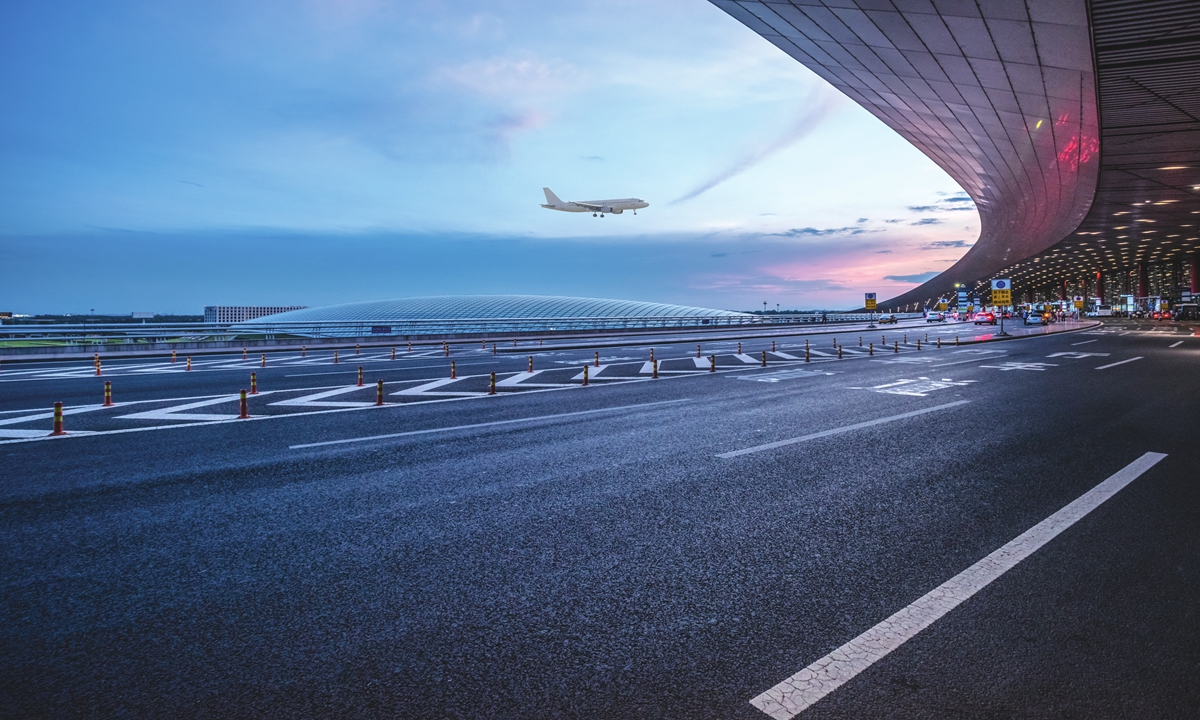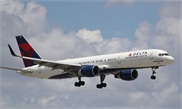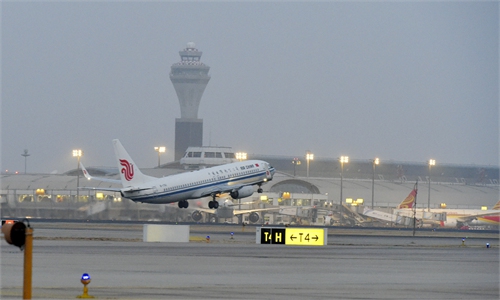
An airplane takes off from the Beijing Capital International Airport. File Photo: VCG
China's air traffic declined by half in November, keeping the industry in negative territory for the year, new official data revealed.
Data from the Civil Aviation Administration of China on Wednesday showed that in November passenger trips stood at 21.526 million, down 44.6 percent from October, and down 51.5 percent year-on-year.
Market watchers largely attributed the decline to localized flare-ups of COVID-19 cases over recent months.
Since the end of November, the impact of the pandemic has meant that many flights from airports in East China's Jiangsu and Zhejiang provinces in addition to Shanghai have been cancelled. At the same time, airlines including Air China, China Eastern Airlines and China Southern Airlines have issued announcements for a free return from Shanghai, Hangzhou, Zhejiang Province, a further signal of the pressure on their operations.
Localized yet persistent flare-ups of COVID-19 in parts of the country have led much of the public to think twice before booking a flight.
Beijing authorities announced in November that the city would cut inbound flights from provincial-level regions classified either middle- or high-risk COVID-19 areas as part of the Chinese capital's latest, and to date strictest, pandemic prevention measures ahead of the Beijing 2022 Winter Olympics. Flights to the capital from middle- or high-risk COVID-19 areas will be limited to one per day at less than 75 percent seating capacity.
Further, on Sunday, officials confirmed the latest infections detected in Ningbo, Zhejiang Province belonged to the Delta strain. The outbreak has been linked to a flare-up in neighboring provinces and cities, according to local authorities, and has since led to the implementing of strict measures for travelers leaving or entering affected areas.
Market watchers noted that the recovery of civil aviation in 2021 largely hinged on two peak seasons, the Spring Festival, and the traditional summer vacation season, but both of which were disrupted by the pandemic.
Data from the third quarter showed that most listed airlines and airports remained in loss-making territory, with recent flare-ups this month likely prolonging the pain for industry participants.
Volatile oil prices and low ticket prices aimed at enticing the public to fly have placed further pressure on the sector.
Zeng Guang, a former chief epidemiologist from the Chinese Center for Disease Control and Prevention, said recently that most people can return home but should take precautionary measures to keep themselves safe in Spring Festival travel rush, such as wearing masks and using sanitizer. However, a number of municipal governments across the country have already released notices encouraging residents to stay put during Chinese New Year.
Global Times


